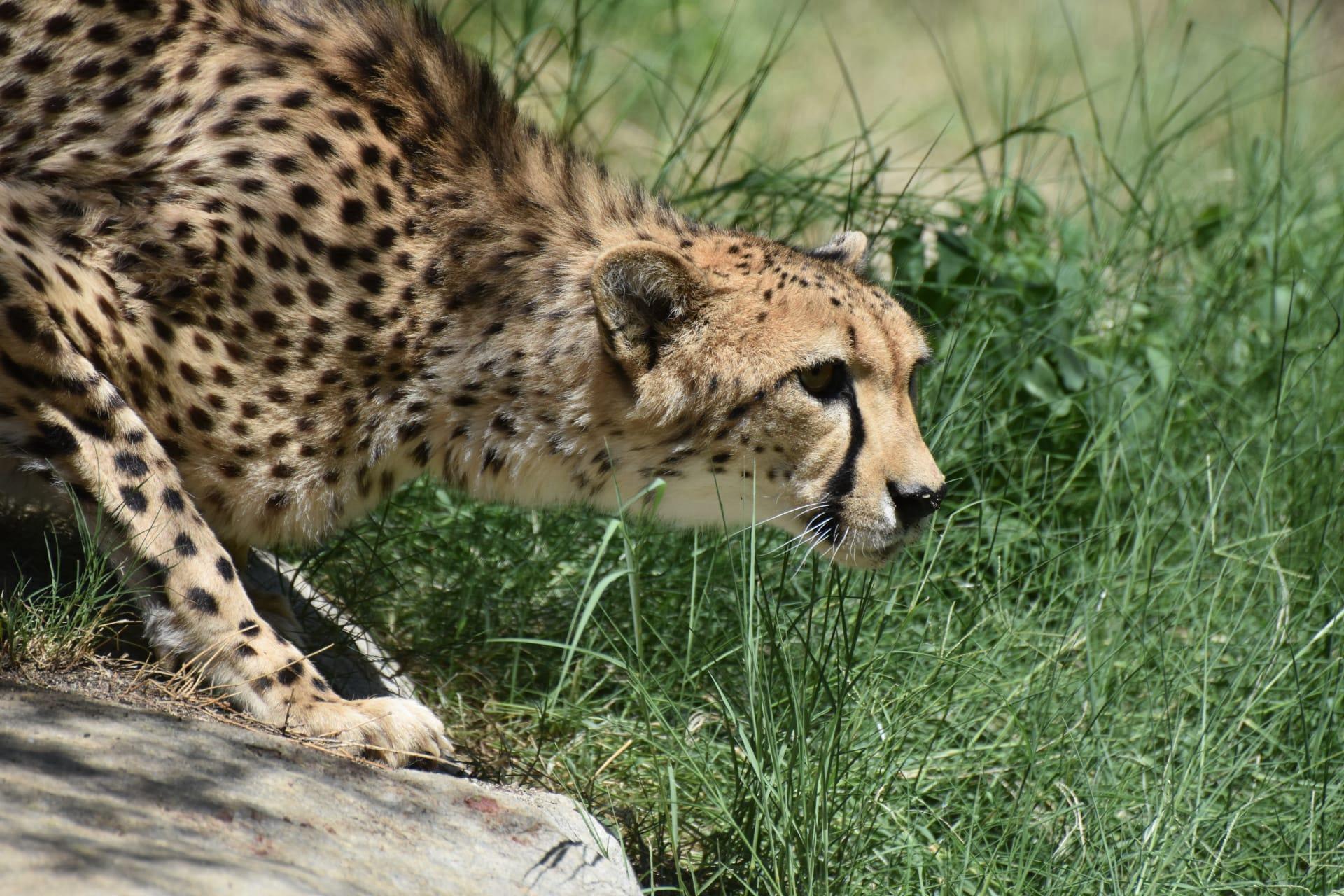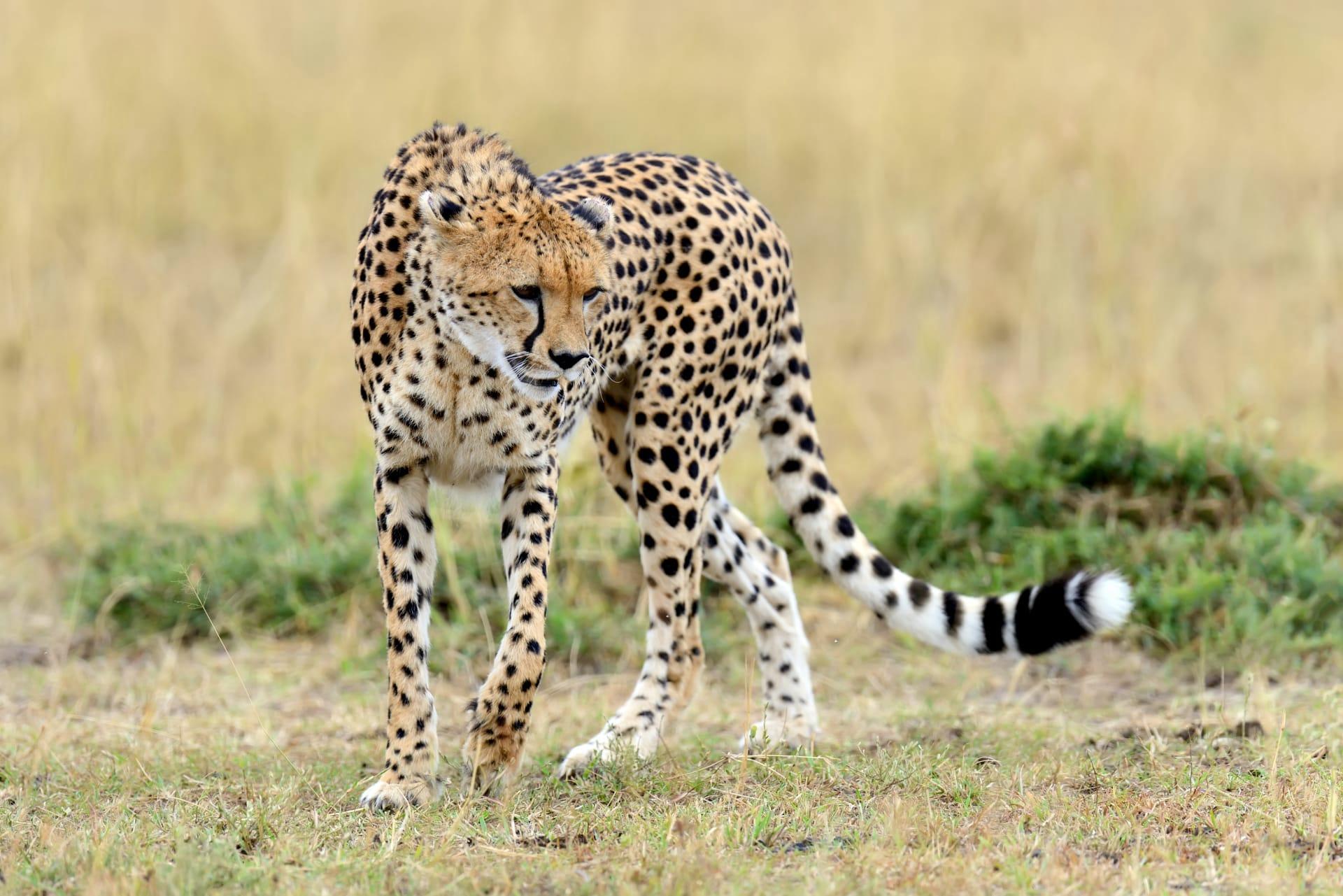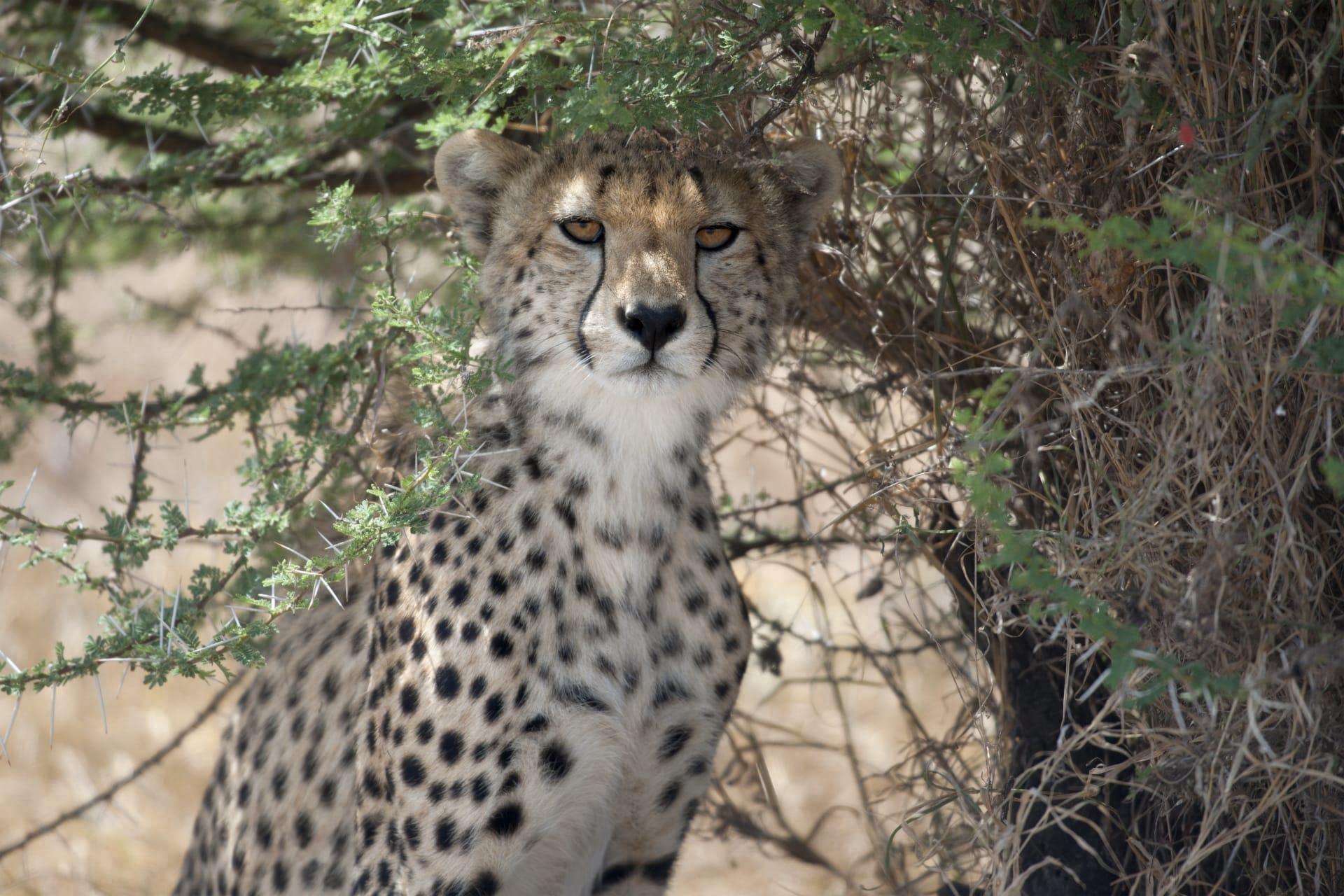Cheetah
- Home /
- Mini Encyclopedia /
- Animal /
- Cheetah
1
The cheetah, scientifically known as Acinonyx jubatus, sits under the Felidae family, which includes all other cats. It's distinguished by its slender body, deep chest, and notably, its spotted coat and black tear-like facial streaks. Unlike other big cats, the cheetah's claws are semi-retractable, aiding in its incredible sprinting capabilities. This unique feature places it in its own genus, Acinonyx, within the Felidae family.
Cheetahs are predominantly found in the wild expanses of sub-Saharan Africa, but a small population also persists in Iran. Their habitat spans from savannahs, where their speed is advantageous in hunting, to arid environments like deserts, demonstrating their adaptability. Sadly, their range has significantly diminished due to habitat loss and other human-related factors, leading to their classification as vulnerable by the International Union for Conservation of Nature (IUCN).

2
Question: Do cheetahs abandon their hunts if they can't catch their prey quickly?
Answer: Contrary to popular belief, cheetahs don't always abandon a hunt if it extends beyond a short sprint. While it's true that they are built for speed, with a record of reaching up to 75 miles per hour, they do possess stamina for slightly longer pursuits. A cheetah’s hunt involves careful stalking followed by a burst of speed, which can last for more than a minute. Their success rate is about 50%, indicating that persistence, in addition to speed, is a key component of their hunting strategy.

3
Cheetahs have evolved several unique strategies for survival. Their incredible speed, which can reach up to 75 miles per hour, is their most famous trait. This speed is achieved through a lightweight frame, long legs, and a long tail that acts as a rudder for balance. However, this speed is energy-intensive and cannot be sustained for long periods, making strategic hunting essential.
Besides their physical attributes, cheetahs use high vantage points like termite mounds or low tree branches to scan for prey. They primarily hunt during the day, avoiding competition with nocturnal predators like lions and hyenas. Cheetahs' spotted coats provide excellent camouflage in the high grasses of their environments, aiding in their stealth approach to unsuspecting prey.

4
In the ecosystem, cheetahs play a crucial role as apex predators. By preying on herbivores such as gazelles and impalas, they help maintain a balance in the animal populations. This predation prevents overgrazing, thereby supporting a healthy and diverse ecosystem. The cheetah's presence indirectly influences the vegetation and other animal species, demonstrating the interconnectedness of the savannah ecosystem.
Their role extends beyond predation. As a vulnerable species, cheetahs are an important focus for conservation efforts, highlighting the impact of habitat loss and human-wildlife conflict. Their conservation indirectly benefits other species sharing the same habitat, thus contributing to the overall health of their ecosystem.

5
Film: "The Cheetah Children" is a notable documentary from the United Kingdom, released in 2017. It provides an intimate look at the life of a cheetah family in Tanzania. The film captures the mother cheetah's challenges and triumphs in raising her cubs, offering insights into their development, survival tactics, and the threats they face in the wild.
Book: "Cheetahs: Biology and Conservation" (2018), published in the United States, is an extensive work by editors Laurie Marker and Anne Schmidt-Küntzel. It delves into the biology, ecology, and conservation challenges of cheetahs, offering a comprehensive view of this magnificent species.
Book: Another insightful read is "The Last Cheetah of Egypt" (2020), authored by Carlos A. Driscoll. This UK-published book explores the historical presence of cheetahs in Egypt, examining their cultural significance and the factors leading to their disappearance from the region. The book interweaves science, history, and conservation, painting a vivid picture of the cheetah's past and present.